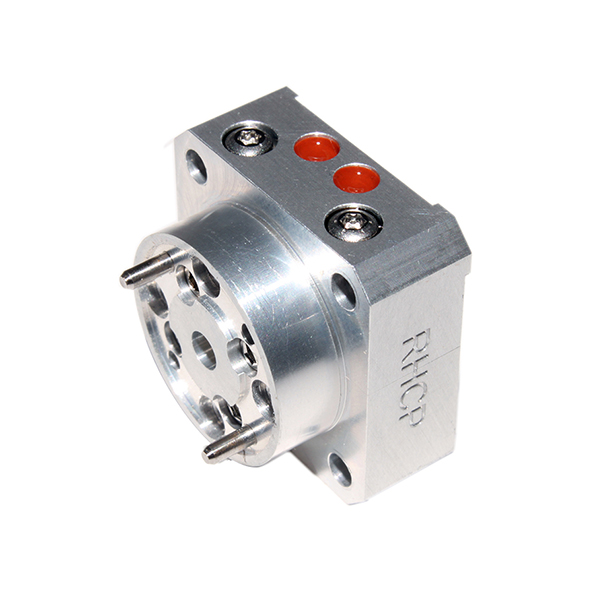Features
- Linear to Circular Conversion
- Customisable to Applications
- Models from 2.60GHz to 330GHz
Applications
- Suitable for conversion between linear and circular polarisation for transmission and reception via a horn antenna
The Septum Polariser uses an internal stepped septum to convert between linear and circular polarisation.  The instrument has two rectangular ports on one side of the septum and either a square or circular common port on the other side. For linear to circular conversion, driving one rectangular input produces right-hand polarisation and driving the other produces left-hand polarisation, at the common port. For circular to linear conversion, the output will appear at either of the rectangular ports depending on the sense of the circular polarisation at the common port.
The instrument has two rectangular ports on one side of the septum and either a square or circular common port on the other side. For linear to circular conversion, driving one rectangular input produces right-hand polarisation and driving the other produces left-hand polarisation, at the common port. For circular to linear conversion, the output will appear at either of the rectangular ports depending on the sense of the circular polarisation at the common port.
Specifications
Each polariser is optimised for the frequency band of interest. Designs are typically suitable for use up to half-band. Performance depends on the bandwidth. VSWR better than 1.5, typical cross-polarisation better than 25dB. Can average power up to the capability of straight waveguide of the same rectangular size. Typical Return Loss for model 26782
| Model Number | Waveguide Size | Frequency Range (GHz) | Return Loss (dB) | Insertion Loss (dB) | Mean Power (W) | ||
| WG | R | WR | |||||
| 15782 | 15 | 84 | 112 | 6.58-10.0 | TBA | TBA | TBA |
| 16782 | 16 | 100 | 90 | 8.20-12.5 | 20 Max | 0.3 | 200 |
| 17782 | 17 | 120 | 75 | 9.84-15.0 | 20 Max | 0.35 | 180 |
| 18782 | 18 | 140 | 62 | 11.9-18.0 | TBA | TBA | TBA |
| 21782 | 21 | 260 | 34 | 21.7-33.0 | 18 Max | 0.5 | TBA |
| 26782 | 26 | 740 | 12 | 60.5-92.0 | 15 Max | 0.5 | TBA |
Related Products
Series 648: Dielectric Polariser
Series 650, 652: Switchable Dielectric Polarisers
Series 651: Corrugated Polariser
Relevant Supporting Products
243, 810, 820, 880: Horn Antennas
Custom Design
Custom built instruments can be supplied; please contact the sales team for more information. sales@flann.com
Ordering

Environmental Specifications
Optimum operating temperature: TBA
Non-Operating temperature: TBA


